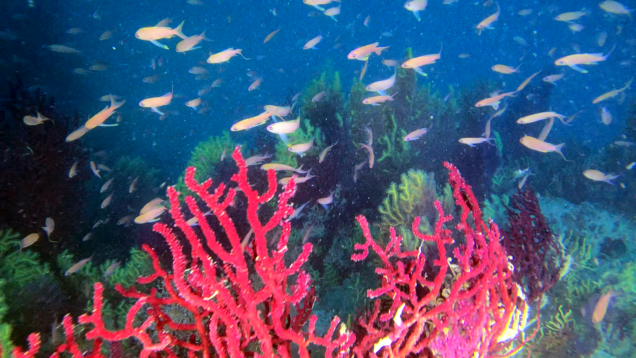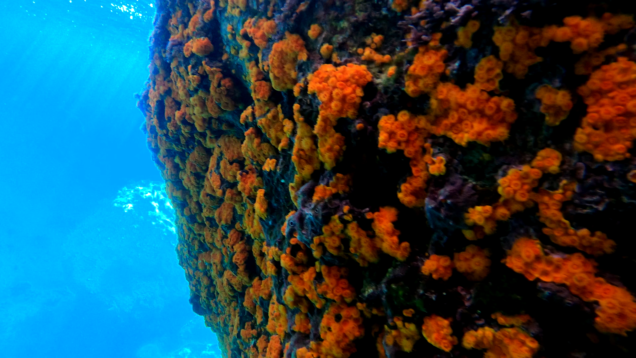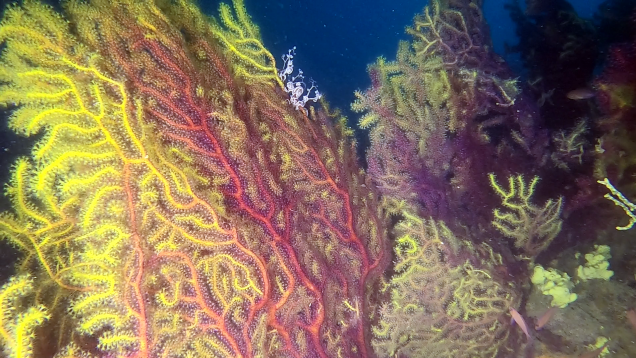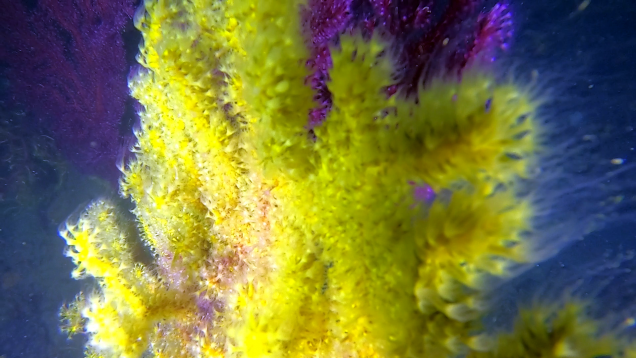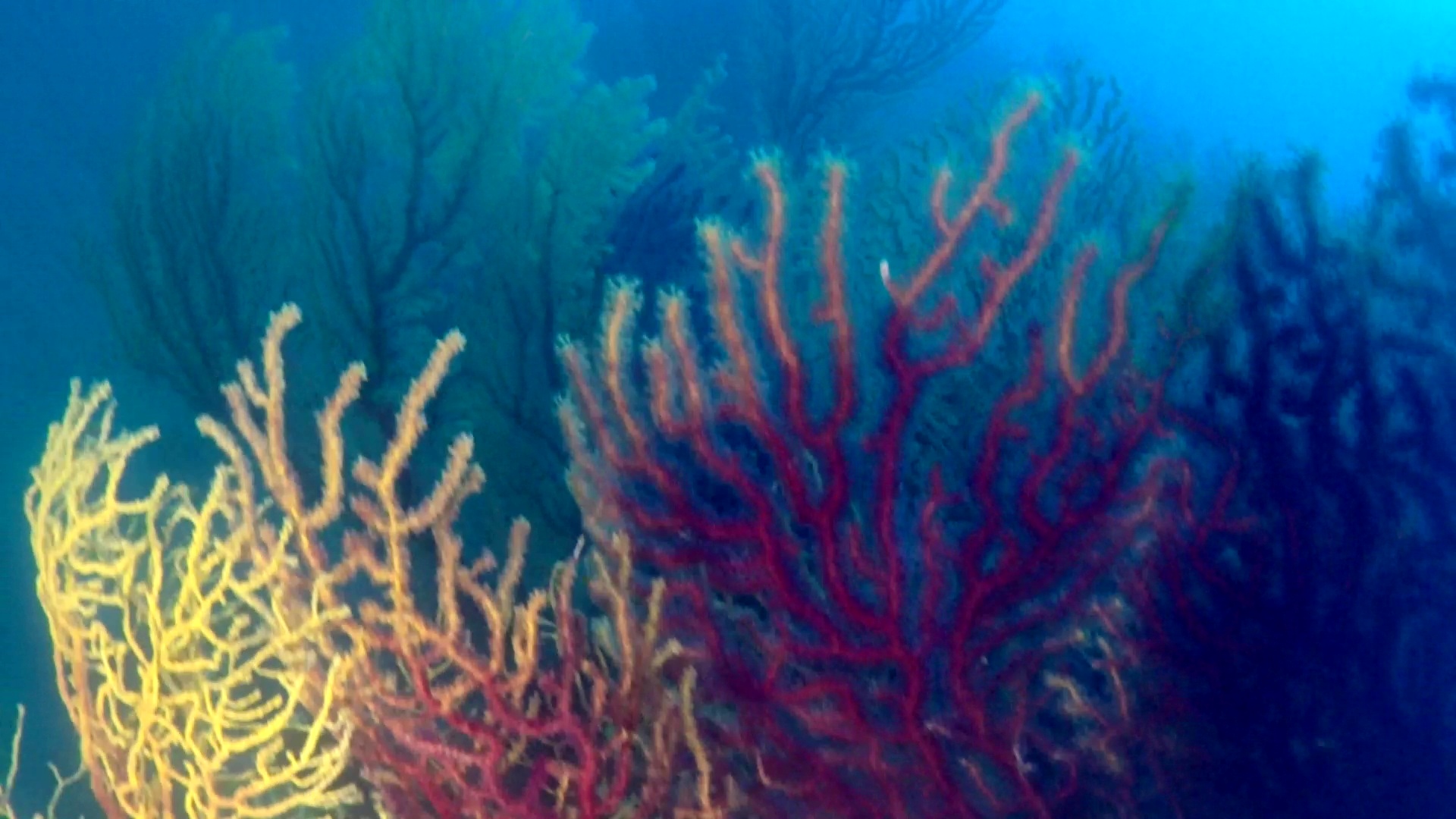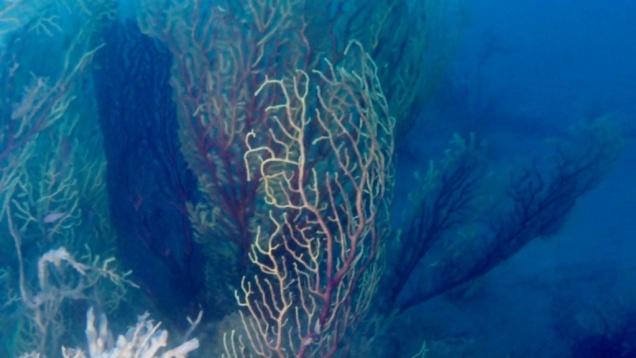Mediterranean coral reef
The Savalia savaglia, commonly known as gold coral, is a species colonial in the family Parazoanthidae. This organism is commonly called "false black coral". It owes its name to its ability to produce a dark-colored horny skeleton, usually blackish. The colonies are generally settled on pre-existing gorgonians skeletons and can grow with ramifications that far exceed one meter in length. The polyps of this coral have six tentacles which is why the species is part of Hexacorallia group. They are bright yellow or whitish, and very large and showy (2-3 cm high), similar to those of Parazoanthus axinellae. Sprout very well from the tissue that lines the skeleton (coenenchyme) and have available alternates, showing smooth tentacles. The polyps do not fall as those of other species but can retract and close in on themselves.




